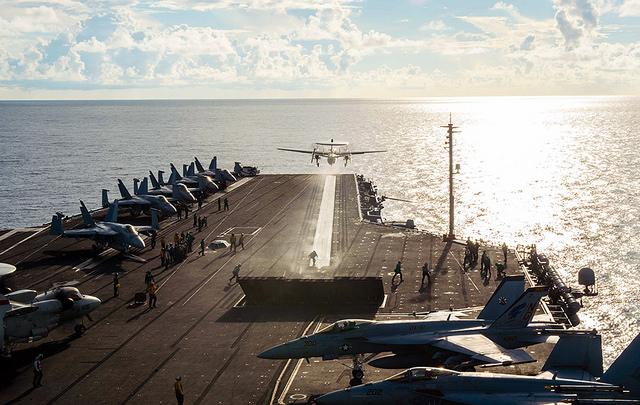
The IISS Shangri-La Dialogue (SLD) in Singapore this weekend gives the Trump administration a major opportunity to set out, in detail, its Asia–Pacific strategy. If it fails to do that, the perception—particularly in Southeast Asia—that the United States is effectively ceding its regional leadership to China will only become more pervasive and more influential with regard to Asian countries’ policy choices. SLD will also provide Prime Minister Turnbull the chance to use his Keynote Address to signal Australia’s strong support for revitalised US strategic engagement across the region.
As we argue in more detail here (paywall), since January the Trump administration has failed to reassure allies and partners over the credibility and durability of US regional leadership. Indeed, Trump’s erratic leadership, combined with contradictory statements by senior US officials, have created uncertainty, unpredictability and confusion in the region about America’s future role.
But commentators who claim that China will be able almost automatically to step in and fill the vacuum created by the Trump administration’s lack of strategy in Asia are going too far. Ultimately, there’s a fundamental contradiction between the Chinese communist party’s authoritarian rule and the economic growth necessary to maintain its current strategic trajectory. China’s economic future is far from assured.
Moreover, states in the region, including Australia, still have leeway to make policy choices that will help prevent a drift towards Chinese regional dominance. The suggestion that Malcolm Turnbull should use his SLD Keynote to signal Australia’s supposed view that the US and China should share power in a new strategic order in Asia is unconvincing. It would be a form of capitulation to Beijing’s interests that would implicitly recognise, for example, a Chinese sphere of influence in the South China Sea.
Allies and partners of the US don’t want their region dominated by China: Xi Jinping’s increasingly hardline regime would almost certainly not behave as a benign hegemon. In reality, the US and its friends still have the means to shape the strategic future of the Asia–Pacific.
Governments and defence establishments across the Asia–Pacific will look for clear indications in US Secretary of Defense James Mattis’ plenary address at SLD that America remains willing to provide strategic leadership. What Mattis says about the military aspects of Washington’s regional engagement will be closely scrutinised.
If, under Trump, the US is no longer ‘rebalancing’, then what are the foundations of US strategy in the region and what is the place of allies and partners in this strategy? What policy will the US pursue in the South China Sea? The conduct of the administration’s first Freedom of Navigation Operation (FONOP) within 12 nautical miles of a Chinese artificial island near the disputed Mischief Reef just last week was welcomed in the region as a sign that the US remains an active player.
If Secretary Mattis wanted to communicate measures that might help protect the existing order that has provided security and prosperity for all in the region (including China), he could announce that the tempo of FONOPs will be stepped up, and at the same time encourage Australia, Japan and European allies (notably the UK and France) to mount similar operations. Announcing US Coast Guard deployments to support partners against intrusions by China’s paramilitary and auxiliary vessels into their waters would also be useful.
The alternative to maintaining a near-constant presence involving a high tempo of naval and air activity in and over the South China Sea would mean that these waters would effectively become a Chinese-controlled strait, to the detriment of the interests of the US, its allies and partners. But it’s not too late to prevent that from happening.
In addition, the US Defense Secretary could provide more details on Trump’s proposal for a significant increase in the 2018 US defence budget, some of which would be invested in ‘a more robust presence in key international waterways and choke points’ including the South China Sea. And if he wanted to be truly ambitious, he could usefully outline a plan to make US Pacific Command into a multinational structure that would enable its allies and security partners to assume greater responsibility for Asia–Pacific security within a collaborative framework.
A more thoroughly multinational PACOM could involve allies assigning ships and other forces to PACOM in peacetime, and earmarking others for use in time of crisis or war. Allies such as Australia could then participate more easily in peacetime PACOM operations such as FONOPS.
It’s in Australia’s fundamental national interest for Washington to maintain its strategic leadership in the Asia–Pacific. To that end, it would be encouraging if Prime Minister Turnbull’s Keynote Address not only emphasised the critical importance of the US role in maintaining the ‘rules-based order’, but should also flag concrete Australian efforts aimed at closer security and defence cooperation with not only the US ally but also Southeast Asian partners. Tellingly, earlier this week Dennis Richardson, Australia’s recently retired Secretary of Defence, voiced support for Australian FONOPs in the South China Sea.
As the regional security environment deteriorates, Australia cannot afford to be strategically passive.